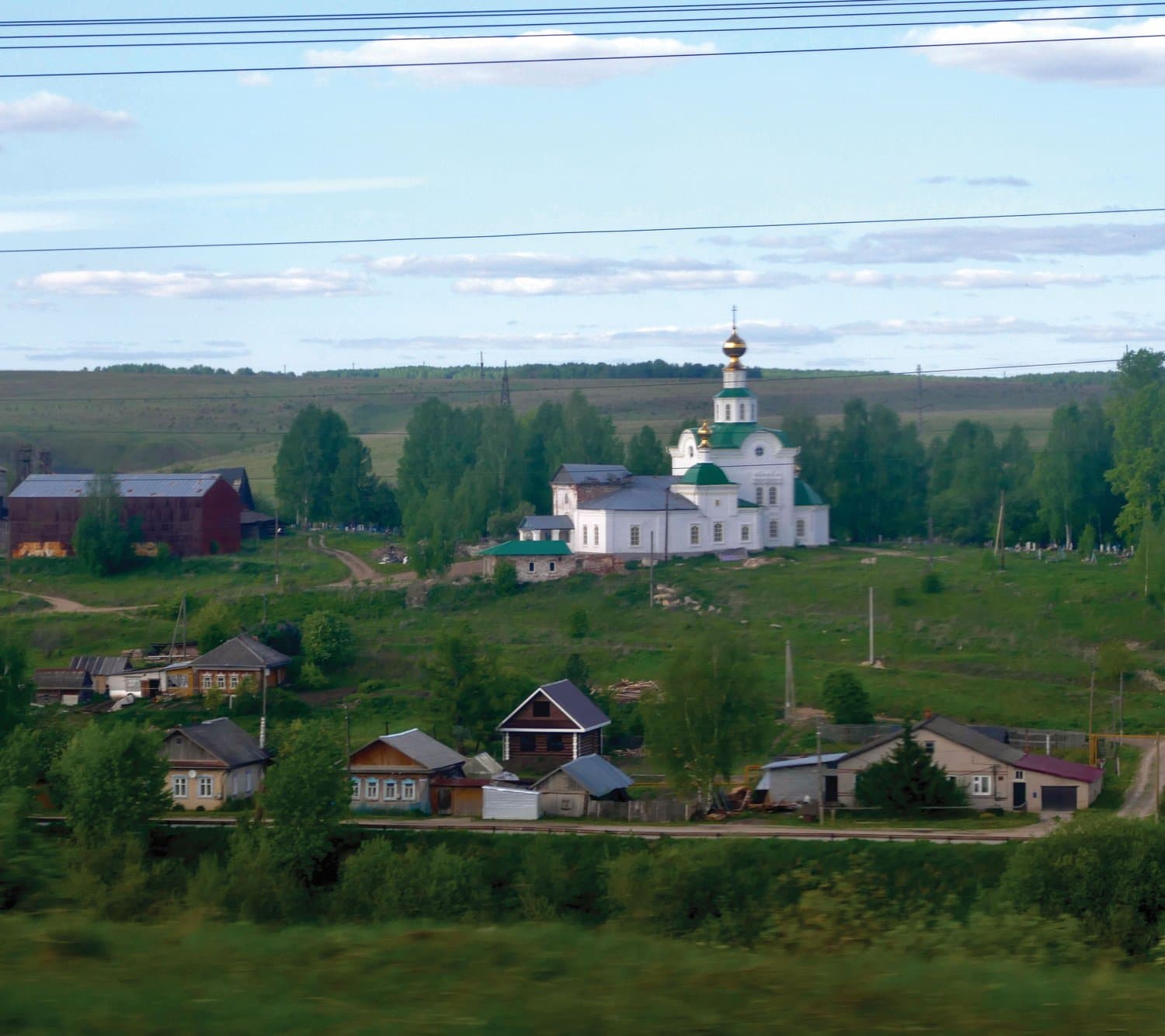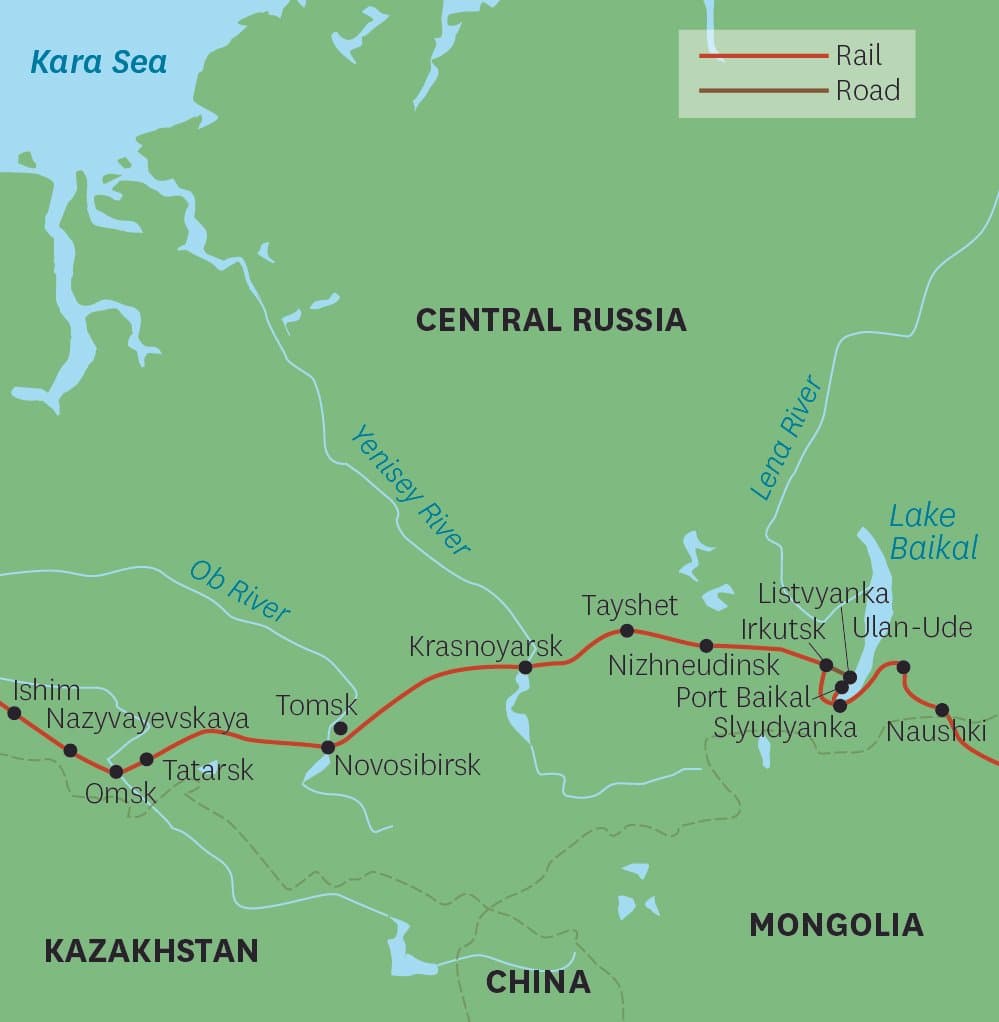Extract — The Antipodean Express, by Gregory Hill

An epic journey from New Zealand to Spain, celebrating the enduring romance of travel by train.
The journey of The Antipodean Express takes in 89 days of travel, on 33 trains, through 19 countries. It begins in New Zealand's North Island, weaves past the volcanoes of Java, through East Asia and on into Europe. From hilarious miscommunications in China to cultural immersion at the Bolshoi Ballet, there are stop-offs with half a world's worth of impressions, people, history, food, music and culture. Hill also describes most of the great trains of the Eurasian hemisphere, from New Zealand's Northern Explorer to the Eurostar, and everything in between.
The extract below details a day’s travel in the depths of Central Russia.
Images & text extracted from Antipodean Express: A journey by train from New Zealand to Spain by Gregory Hill, published by Exisle Publishing, RRP: $44.99.
Wednesday, 29 May
Omsk to Kirov
Omsk arrived at about 2.15 in the middle of the night. This was another million-plus city and lots of people were getting on and off the train, and making as much noise as they possibly could, right outside our cabin door. I gave up on sleeping and lay there angrily, eyes wide open, staring at the ceiling, waiting for it all to stop. As we left Omsk the noise died down and the eastern sky started to glow about 3 am. Sleep continued to elude me; tonight’s ride over the rails was particularly rough.
A hundred and fifty kilometres after Omsk, at Nazyvayevskaya, the clocks went back yet another hour. Nazyvayevskaya has the distinction of being our closest point to the Kazakhstan border, just 50 kilometres away to the southwest.
Soon after Nazyvayevskaya came a stop at Ishim, where Alexander von Humboldt was almost shot in 1829, while carrying out a geological survey for the Tsar. Humboldt, standing on a hill surveying Ishim through a threatening theodolite, so upset the local police chief that a detachment of armed soldiers was sent up the hill to keep an eye on the supposed German spy.
We got out of Ishim in one piece and carried on to a stop at Tyumen at 8.30 am. Tyumen looked like a big city with bad rush-hour congestion. It had been raining, but at Tyumen Station we emerged onto the platform into freshly cleaned air and bright sunlight, under the sternly watchful eye of our provodnitsa.
The provodnitsa is the carriage attendant. There are two for each carriage. Usually built like a tank, the provodnitsa projects a fearsome visage and inspires instant obedience. Among other things, she is responsible for the frighteningly complex coal-fired samovar at the end of each carriage. It never goes out for the whole journey. The odd thing is that as you exit your modern steel carriage on this electric train, you walk through a cloud of coal smoke.

The provodnitsa is also responsible for keeping the stainless-steel toilets at surgical-grade cleanliness. The moment you vacate the toilet, she’s in there with gloves, brush and squirt-bottle. I wouldn’t mind having a provodnitsa at home. And she did smile occasionally. The element of surprise made her smile thrilling and disarming.
So, a few minutes of fresh air among the crowds on the Tyumen platform, then back on board through the steely gaze and the coal-smoke cloud. Tyumen was a major transit point in the Gulag system. The Tyumen Forwarding Prison was legendary for its horrific conditions of misery. The excrement buckets certainly never saw a provodnitsa. At least, when the railway reached Tyumen in 1888, the prisoners could finally come here in cattle wagons. Before that they were herded over the Urals on foot. Time to leave Tyumen then. Just out of town we passed the frontier pillar between Siberia and the Urals. The old road used to come this way too; it seems that almost every prisoner who ever went to Siberia came past this sentimental and tragic landmark. The commemorations of misery continued 40 kilometres further on at Yushala, where the sailors who mutinied on the battleship Potemkin in 1905 were shot.
Now we started to gradually wind our way into the foothills of the Urals, and there was heavy industrial development on the left which led us into Yekaterinburg, a city of 1.4 million, at 1.40 in the afternoon. Yekaterinburg is where Tsar Nicholas II and his family were murdered by Bolsheviks in 1918.
The city was subsequently renamed Sverdlovsk after Yakob Sverdlov, the party official in charge of the murders.
Sverdlovsk gained further notoriety in 1960 when a CIA U-2 reconnaissance aeroplane flying near the city at 68,000 feet was shot down by a Soviet missile. Proof that the USSR did not hold the monopoly on callous disregard for human life, was provided by the US Congress. Congress criticized the pilot, Gary Powers, for: first, not blowing up the plane and, second, not committing suicide, and allowing himself to be captured 45 kilometres south of Sverdlovsk, instead. Sverdlovsk reverted to the name Yekaterinburg again in 1992.
After a half-hour break, we moved on from Yekaterinburg, up into the gently underwhelming Urals where we soon passed the obelisk at Pervouralsk that marks the nominal border between Asia and Europe. We had transited Asia from south-east to north-west and now here we were in Europe. I must say it didn’t feel any different. On through dense green and white forests and along very attractive big rivers, with isolated towns and gold onion-domed churches. We rumbled on through Kungur Station, a big little place on the beautiful broad Sylva River, and down the west side of the Urals to Perm.
From 1940 to 1957 Perm was named Molotov after the foreign minister. The cocktail appeared about then too, named by the Finns during their Winter War with the USSR. As the train left Perm we crossed the kilometre-long bridge over the mighty inland waterway the Kama River, which flows into the Volga. Names that sounded comfortingly familiar, though I had never been here before.
As we went to bed in our now well-worn and messy cabin, we put the clocks back another hour. The next place of interest was Kirov, around midnight.
Another city of exiles, it takes its name from the high-ranking communist Sergei Kirov, who was assassinated in 1934. There is a junction at Kirov, and a branch line goes north to Kotlas, where Alexander Solzhenitsyn’s One Day in the Life of Ivan Denisovich is set. After all this depressing history at midnight, one benign fact about Kirov stands out: it was the northernmost point of the entire Antipodean Express route, at 58°36’ north.

About the author
Gregory Hill is a former principal player in the New Zealand Symphony Orchestra. Following his career in music, he indulged his secret passion for long-distance train travel, resulting in this epic journey.